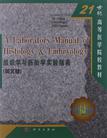组织学与胚胎学实验指南
出版时间:2003-3 出版社:谢富康、陈宁欣、 高英茂 科学出版社 (2012-03出版) 作者:谢富康,陈宁欣,高英茂 编 页数:114
内容概要
双语教学是21世纪我国高等院校教学改革之大势所趋。《组织学与胚胎学实验指南(英文版)》就是为高等医学院校组织学与胚胎学课程编写的配套英文教材。《组织学与胚胎学实验指南(英文版)》包含实验指导和彩色图谱两个部分。实验指导部分介绍组织学与胚胎学各章节实验的目的、内容和观察方法,其中胚胎学部分还配有思考题,以帮助学生理解胚胎发生的变化过程。图谱部分配合实验指导,有近200幅照片,使学习过程形象、生动。 《组织学与胚胎学实验指南(英文版)》适用于医学院校各专业实验课教学和学生复习、自学。
书籍目录
Chapter 2 EPITHELIA 1.Simple cuboidal epithelium 2.Simple columnar epithelium 3.Pseudostratified ciliated columnar epithelium 4.Stratified squamous epithelium 5.Transitional epithelium 6.Simple squamous epithelium(endothelium) 7.Simple squamous epithelium(mesothelium)surface view 8.Simple columnar epithelium 9.Pseudostratified ciliated columnar epithelium showing the basement membrane Chapter 3 CONNECTIVE TISSUE 1.Spread preparation of LCT 2.Spread preparation of LCT,showing mactophage 3.Section of loose connective tissue 4.Section of connective tissue showing plasma cell 5.Section of dense connective tissue 6.Adipose tissue showing fat cell 7.Reticular fiber 8.Hyaline cartilage 9.Elastic cartilage 10.Fibrous cartilage 11.Cross section of long bone 12.Longitudinal section of long bone 13.Intramembranous ossification 14.Endochondral ossification 15.Blood smear Chapter 4 MUSCLE TISSUE 1.Longitudinal section of skeletal muscle 2.Cross section of skeletal muscle 3.Longitudinal section of cardiac muscle 4.Cross section of cardiac muscle 5.Longitudinal section of smooth muscle 6.Cross section of smooth muscle 7.Longitudinal section of skeletal muscle 8.Longitudinal section of cardiac muscle,showing intercalated disk and cross striation 9.Longitudinal section of skeletal muscle 10.Longitudinal section of skeletal muscle 11.Longitudinal section of cardiac muscle Chapter 5 NERVOUS TISSUE and NERVOUS SYSTEM 1.Cross section of spinal cord 2.Spinal cord showing multipolar neurons 3.Spinal cord showing neurofibrils in multipolar neuron 4.Cross section of sciatic nerve 5.Longitudinal section of sciatic nerve 6.Fibrous astrocytes 7.Neuroglia cells 8.Motor end plate 9.Finger skin,showing Meissner's corpuscle(A),Pacinian corpuscle(B)10.Longitudinal section of skeletal muscle,showing muscle spindle 11.Synapses 12.Section of cerebral cortex 13.Section of cerebellum 14.Section of spinal ganglia Chapter 6 CARDIOVASCULAR SYSTEM Chapter 7 LYMPHATIC SYSTEM Chantpr 8 SKIN Chapter 9 ENDOCRINE SYSTEM Chapter 10 DIGESTIVE TRACT Chapter 11 GLANDS ASSOCIATED WITH THE DIGESTIVE TRACT Chapter 12 RESPIRATORY SYSTEM Chapter 13 URINARY SYSTEM Chapter 14 MALE REPRODUCTIVE SYSTEM Chapter 15 FEMALE REPRODUCTIVE SYSTEM Chapter 16 EYE AND EAR Chapter 17 EMBRYOLOGY
章节摘录
版权页: 插图: These glands consist of four structures attached to,or embedded within,the posteriorsurface of each thyroid lobe.The parathyroid secretion,parathormone,is apolypeptide important in the regulation of calcium and phosphorus metabolism.Theparathyroid glands consist of closely packed masses and cords of epithelial cells withina stromal meshwork of collagenous and reticular fibers.Oxyphil cells are interspersedsingly or in clumps among the predominant cellular elements,the chief cells.Study the dog parathyroid glands(Fig 9-4).They are supported by septa from thecapsule,which penetrate each gland and also convey blood vessels into its interior.They have a parenchyma composed of two types of cells,chief cells and oxyphil cells.The chief cells are most numerous.They are relatively small cells,therefore,theirnuclei appear to be more closely packed.Chief cells form anastomosing cords,surrounded by a rich,fenestrated capillary network.Look for patches of eosinophiliccells with more widely spaced nuclei and distinct cell borders.These are oxyphils,which may be found in small to large groups scattered among the chief cells.Theoxyphils are larger cells with a smaller and more densely stained nucleus.The eosinstaining of oxyphils may have faded on some slides,but their nuclei and distinct cellborders may usually be recognizable.Some slides have relatively few oxyphils. 3.ADRENAL GLANDS The adrenal gland is composed of two embryological and functionally distinct glands.The cortex is of mesoderm origin and secretes several steroids.Hormones exhibit atlease three types of activity:an effect on mineral metabolism(mineral corticoids),oncarbohydrate metabolism(glucocorticoids)and on androgenic activity.The activity ofthe cells in the zona glomerulosa,the zona fasciculata and the zona reticularis of thecortex are controlled humorally by the anterior pituitary.The cells of the adrenalmedulla are of neural ectoderm origin,migrating out from the neural crest in amanner similar to autonomic ganglion cells.They become typical epithelioid secretorycells arranged in irregular rows with arterioles and capillaries on their basementmembrane side and large venous capillaries at the opposite pole.Their nuclei lietoward their basement membrane,and the cells are oriented to secrete into venouscapillaries.The cells are under autonomic control,receiving preganglionic(aeetylcholine)fibers; they release their hormones,epinephrine and norepinephrine inresponse to stimulation by the preganglionic fiber.There are large ganglion cells inthe medulla,among the secretory cells(Fig 9-5).
编辑推荐
《21世纪高等医学院校教材:组织学与胚胎学实验指南(英文版)》适用于医学院校各专业实验课教学和学生复习、自学。
图书封面
评论、评分、阅读与下载
用户评论 (总计0条)
推荐图书
- 七年级英语上
- (2007全新奉献)三点一测丛书(上)
- 启东作业初三物理(下)(沪科版)第二次修订版
- 数学(1上人教版课标本最新修订)/培优新方案课程同步训练 (平装)
- 课标培优 一年级语文(上)(语文)修订版
- 课标培优新方案 七年级地理(上)(湘教)
- 课标培优新方案 八年级地理(上)(湘教)修订版
- 课标培优新方案 八年级历史(上)(岳麓版)修订版
- 现代小学语文选学读本第六册
- 现代小学语文写字本第六册
- 课标互动 七年级语文(上)(苏教)
- 语文(8上江苏教育版课标本)/难点互动
- 难点互动 初三英语(上)(译林)
- 05秋难点互动·初三语文上
- 七年级英语
- 05秋走向清华 语文九年级上 课标苏教
- 05秋走向清华北大八年级物理上课标沪科
- 七年级英语(上译林版+牛津版课标本)/发散思维大课堂 (平装)
- 七年级历史
- 三点一测(上)
- 九年级数学(上华东师大版学生专用版)/在线课堂龙门新教案丛书
- 课标二合一 七年级语文(上)(苏教版)
- 9语(上)//同步.拓展2合1(语文版)
- 课标二合一 八年级物理(苏科版)
- 课标二合一 八年级物理(沪科版)
相关图书
- 数学
- 专业英语(上册)
- 临床病例诊治演习·妇产科学分册
- 成人护理(上册)
- 病理学
- 农村急诊医学培训教材
- 有机化学实验
- 农业植物病理学
- Human-Computer Interface Design人机界面设计
- 数字图像处理
- 电化学
- 电路与电子学基础
- 实用数字图像处理
- 灰色系统理论及其应用
- 软件过程改进的复杂性工作程序研究
- 建筑装饰技术
- 钢筋混凝土结构习题解
- 锅炉房工艺与设备(上、下册)
- 黄土高原土壤侵蚀治理的生态环境效应
- 产酸发酵微生物生理生态学
- 初一数学(上)//黄冈教练双栏链接(修订)
- 成长的足迹
- 05秋快客英语 听力训练 高二年级
- 05秋快客英语 听力训练 高三年级高考版
- 04创新练测 高一物理上
